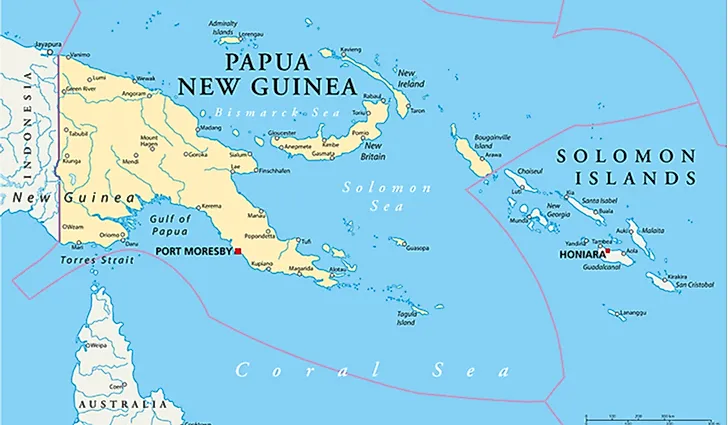What Was The Battle of Slater's Knoll?

The Battle of the Slater’s Knoll was a fierce war between Japanese soldiers and Australian forces during the Second World War. The battle, which took place between March 28 and April 6, 1945, was fought on Bougainville Island and was won by the Australian troop. The Japanese lost largely because of using massed attacks tactics.
Historical Background
At the start of 1945, the 6th division of the Japanese occupied Bougainville. Commanded by General Tsutomu Akinaga, the troop composed of 13th and 23rd infantry regiments took over the region. Previously, in November 1944, the Australian II Corps took control of the Bougainville Island from the US XIV corps under the command of Lieutenant General Stanley Savige. The Australian troop, therefore, organized three separate drives; from the north, the south, and center. Consequently, on January 21, 1945, General Savige commanded the first attack in the south. Another swift and vigorous attack was made along the Empress Augusta Bay. The attack resulted in the death of 240 Japanese and 148 casualties on the Australian side.
The Makeup Of The Forces
Both the Japanese and the Australian forces were well armed and trained. The Japanese troops known as the 6th division was composed of 13th and 23rd infantry regiments. They were reinforced by regiments from the 6th Engineer, field artillery, transport forces, and the 4th field artillery. The whole contingent consisted of 3,300. The Australian forces were composed of militia and imperial forces mainly drawn from the 3rd division and the 11th and 23rd brigades. The 25th infantry Battalion joined the forces latter under Lieutenant Colonel John McKinna.
Description Of The Engagement
The first attack took place on the night of March 27, 1945. About 100 Japanese forces took advantage of the 25th infantry Battalion’s main position gaps. They attacked the rear of the Australian wall. The attack failed because the Australian troops had been alerted. Both sides lost soldiers with 19 Japanese dead and 3 Australians killed.
The second attack was made in the morning of March 28 near the 5th Field Battery barracks. A booby trap set by the Australians went off warning them of the attack hence the soldiers were on standby. Fire exchange followed until midday. The same evening, the 9th infantry Battalion was attacked at Barara. The attack was through sporadic fighting that went on until morning, leaving 23 Japanese dead and 4 Australians wounded.
On March 30, the probes intensified when the Japanese attacked the 25th infantry Battalion’s base. As the Australian side became weakened, the reinforcement was required. The 2nd and 4th armored Regiment brought war tanks towards the 25th position. On March 31, the tanks reached Slater’s Knoll. The first major assault occurred on April 1. The Australians advanced towards the north and established a perimeter near Slater’s Knoll. At Puriata, near the river, a major battle ensued.
On the night of April 4, Japanese forces destroyed the artillery battery of the Australians. On the morning of April 5, the Japanese attacked from the north but were halted by heavy defensive gun shots. Many Japanese soldiers by now died. At midday, the Australians dispatched two tanks from ‘B’ Echelon perimeter to Knoll. On arrival, they flushed out any Japanese survivor.
The Outcome Of The War
The aftermath of the war was numerous deaths, casualties, and prisoners of war. Though the exact figure is not documented, it is estimated that more than 620 Japanese died and over 1,000 were wounded. The Australian forces had lost 10 officers and 179 other soldiers. The 25th Infantry Battalion was awarded with an honor of “the skater’s Knoll.”
Historical Significance And Legacy
The war weakened the Japanese ability to engage in further war. The troops were humiliated in the Battle of Skater’s Knoll and many other subsequent battles. The Japanese eventually surrendered after the US bombed Hiroshima and Nagasaki cities on August 6 and 9 respectively. Japan, therefore, surrendered unconditionally. The World War eventually ended on September 2, 1945.











